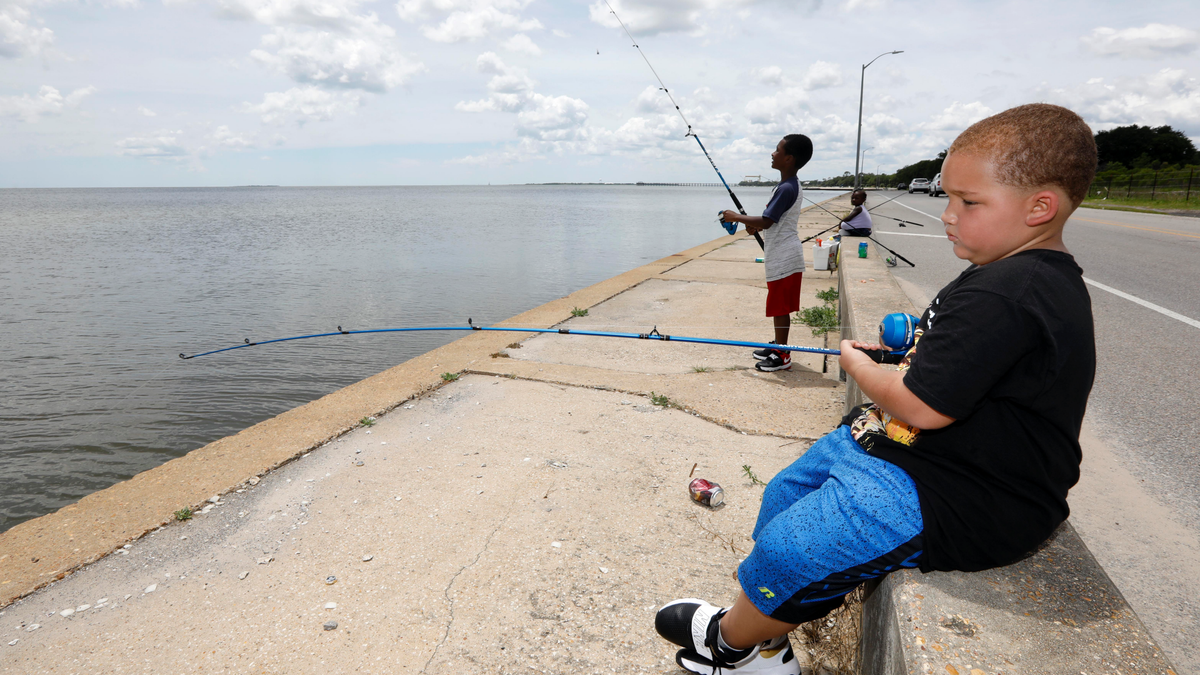
ST. PETERSBURG, Fla. – The first named storm of the Atlantic hurricane season, Subtropical Storm Alberto, gained strength as it approached the northern Gulf Coast, emptying out beaches in Florida ahead of Memorial Day.
The storm disrupted long holiday weekend plans from Pensacola in the Florida Panhandle to Miami Beach on Florida's southeastern edge. Lifeguards posted red flags along the white sands of Pensacola Beach, where swimming and wading were banned amid high surf and dangerous conditions.
It also triggered mandatory evacuations of some small, sparsely populated Gulf Coast barrier islands in one Florida county. The Florida Division of Emergency Management said in a statement Sunday that a mandatory evacuation has been issued in Franklin County for all barrier islands there and those in the county living directly on the coast in mobile homes or in recreation vehicle parks.
Alberto got an early jump on the 2018 hurricane season, which doesn't officially start until June 1. The storm prompted Florida, Alabama and Mississippi to launch emergency preparations over the weekend amid expectations Alberto would reach land sometime Monday. Rough conditions were expected to roil the seas off the eastern and northern Gulf Coast region through Tuesday.
"These swells are likely to cause life-threatening surf and rip current conditions," the National Hurricane Center in Miami said in a statement.
Gusty showers were to begin lashing parts of Florida on Sunday, and authorities were warning of the possibility of flash flooding.
At 7:30 p.m. EDT Sunday, Alberto was centered about 195 miles (315 kilometers) west of Tampa and had maximum sustained winds of 65 mph (100 kph) — up from 50 mph (85 kph) earlier. Forecasters said Alberto has most recently taken a north-northwest track that would bring it over the northern Gulf of Mexico during the night and make landfall on or in the vicinity of the Florida Panhandle on Monday.
A subtropical storm like Alberto has a less defined and cooler center than a tropical storm, and its strongest winds are found farther from its center. Subtropical storms can develop into tropical storms, which in turn can strengthen into hurricanes. Forecasters cautioned that heavy rain and tropical storm conditions could reach the northern Gulf Coast well ahead of the center of Alberto making landfall.
Meanwhile, the National Hurricane Center in Miami discontinued all storm surge warnings for most of the state's peninsula. It said isolated tornadoes remained a threat in Florida in the coming hours.
Mark Bowen, the Bay County Emergency management director, said at a Sunday afternoon news conference that the concern isn't with storm surge due to the timing of landfall and the tides. He said Alberto's biggest threat will be its heavy rains, with forecasts of anywhere from four to 12 inches (10-30 centimeters) of rain in some areas.
In Taylor County, there were voluntary evacuations for those in coastal zones and beach communities, mobile homes, RV parks and low-lying areas. In Gulf County, T. H. Stone Memorial St. Joseph Peninsula State Park began evacuations Sunday morning.
In Miami, organizers called off the sea portion of the Miami Beach Air & Sea Show on Sunday because of heavy rain and rough waters. And in the Tampa Bay area on the central Gulf Coast, cities offered sandbags for homeowners worried about floods. Live video from webcams posted in Clearwater and Destin showed half-empty beaches, and whitecaps roiled the normally placid Gulf waters.
The hurricane center said Sunday that a tropical storm warning was in effect from Bonita Beach, Florida, to the Mississippi-Alabama border.
In Gulf Shores, Alabama, webcams showed beaches starting to fill up as the storm's track shifted slightly east away from the region, but red flags on the beach warned beachgoers to stay out of the rough water. Grant Brown, the city's public information officer, said they had already finished a number of preparations such as clearing culverts to prepare for big rains but Sunday had turned into a "really nice day."
With conditions expected to worsen overnight, officials are encouraging people planning to check out Monday to give themselves extra time.
Jeffrey Medlin, meteorologist in charge at the National Weather Service's Mobile office, warned that even after the storm moves north there will still be swells coming up from the south that could cause dangerous rip currents. Just because it's "nice and sunny" after the storm passes, Medlin said, there's still a risk for swimmers.
"People have drowned by going out to the water too soon," he said.
___
AP writer Rebecca Santana reported from New Orleans.

